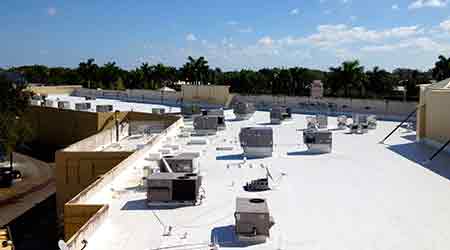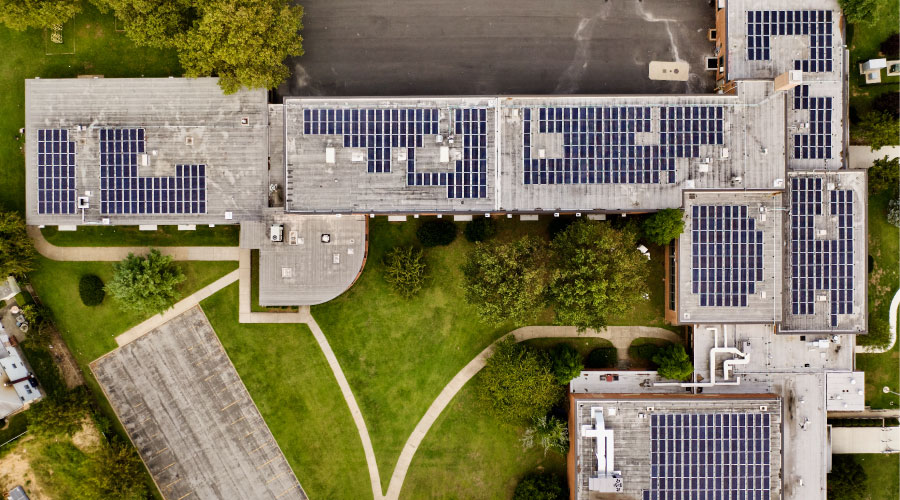New-Generation Roof Coatings Offer Many Benefits
Part 1 of a 4 part article on new-generation roof coatings
A sponsored section in conjunction with the Roof Coatings Manufacturers Association
A Closer Look at Roof Coatings
New-generation coatings offer benefits for roofs and facilities, provided managers understand options and specify properly
Few areas of institutional and commercial facilities are as out of sight and out of mind as roofs. Because of their relative remoteness to daily building activities, roofs escape tough scrutiny from building owners and occupants.
Maintenance and engineering managers have no such luxury, though. For them, the condition and performance of roofs are among their highest priorities. Because of their responsibility to maximize the investment in roofing, many managers are paying more attention to the role of roof coatings. In the short term, a coating can address roof leaks, while in the long term, it can extend a roof’s performance life and hold down related costs.
To successfully specify the most appropriate roof coating based on roof type, climate, and other central factors, managers need to better understand changes in coatings formulations and the properties that enable coatings to perform up to expectations.
"It’s a common mistake to assume that a coating is just a coating," says Lee Martucci with GAF. "You have to do your homework on coatings to ensure you understand key characteristics of the coating, such as adhesion, elongation, tensile strength, and water absorption."
Trending now
Manufacturers of new-generation roof coatings are offering products designed to meet a host of changing customer demands, as well as updated laws that limit the level of volatile organic compounds (VOCs) coatings can contain. Jason Smith with The Garland Co. points to recent changes in VOC regulations for the Salt Lake City, Utah, region as an example of the regulatory environment.
"Those counties have changes their VOC regulations to be more strict for roof coatings — architectural coatings in general, but roof coatings, as well," Smith says. "So now you’re seeing a lot of air quality regions tightening their VOC restrictions, which puts a strain on formulators to find solutions using exempt solvents and then reformulating."
Manufacturers also need to address customer demands when introducing new coatings and reformulating existing products. One long-standing challenge involves a coating’s resistance to rain and its ability to dry quickly after application.
"One of the worst things that can happen with an acrylic coating is that you put it down and before it dries, a big storm comes in and either damages it or washes it all away," Martucci says. "It’s not just the lost time and lost material. It can cause a real mess if it runs down the side of the building or into the parking lot. So the big push is toward quick dry and early rain resistance." He cites another moisture-related issue as a challenge for coatings manufacturers.
"Ponding water is always an issue when you have low-sloped roofing," he says. "As much as we use good roofing practices to get rid of ponding water, they always seem to exist. Coatings, especially acrylics, are not made to resist that, so improving that resistance has been a focus by using new materials outside of acrylics, like silicone.
Despite the changing trends, certain types of roof coatings are likely to remain popular options for managers.
"Acrylic coatings and styrene acrylic coatings dominate the market and continue to grow at double-digit rates," says William Kirn with National Coatings. "These flexible white roof coating products are very robust and can be tailor made for specific regions and climates. The application is fairly easy, straightforward and inexpensive."
Related Topics:















